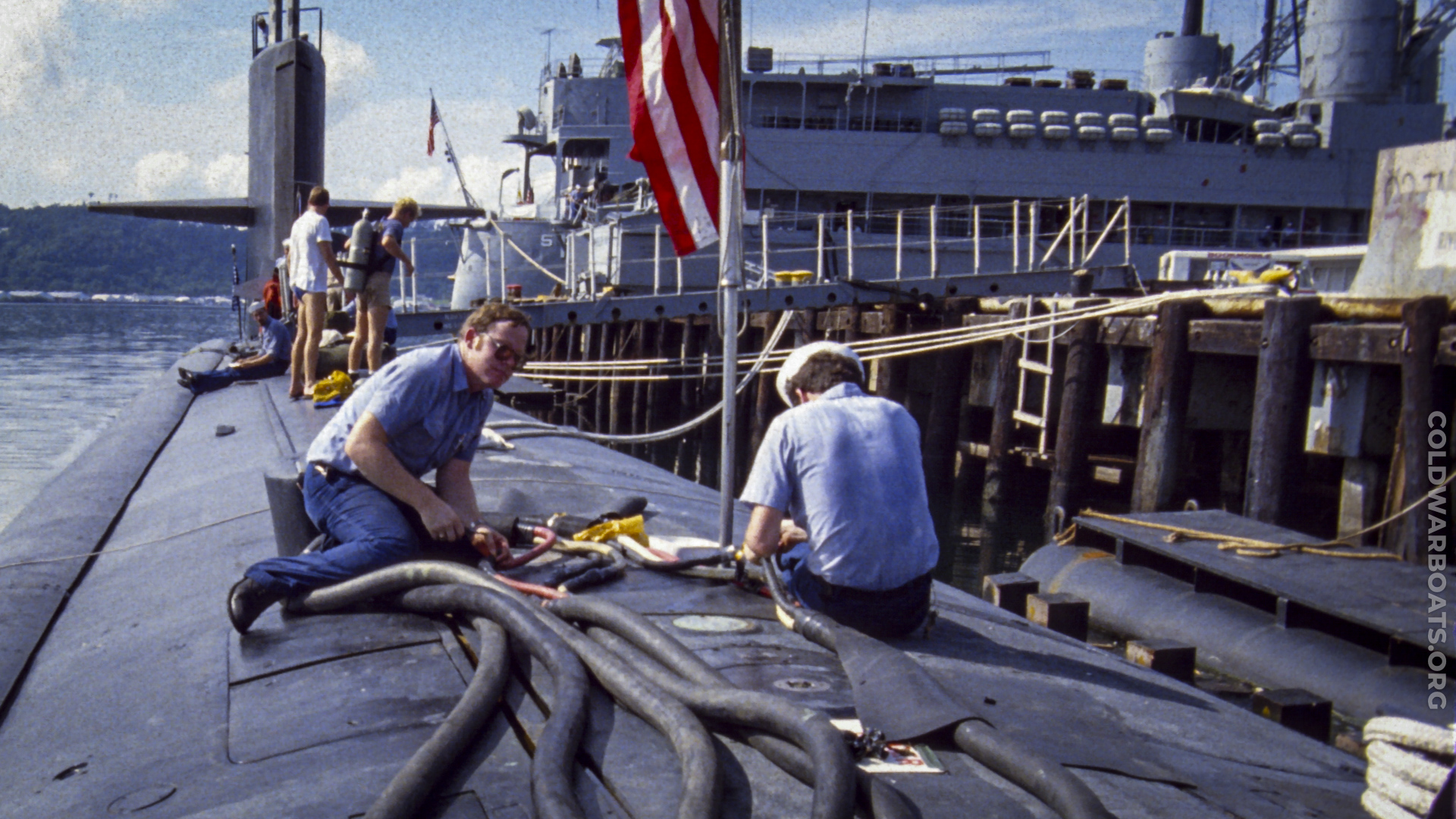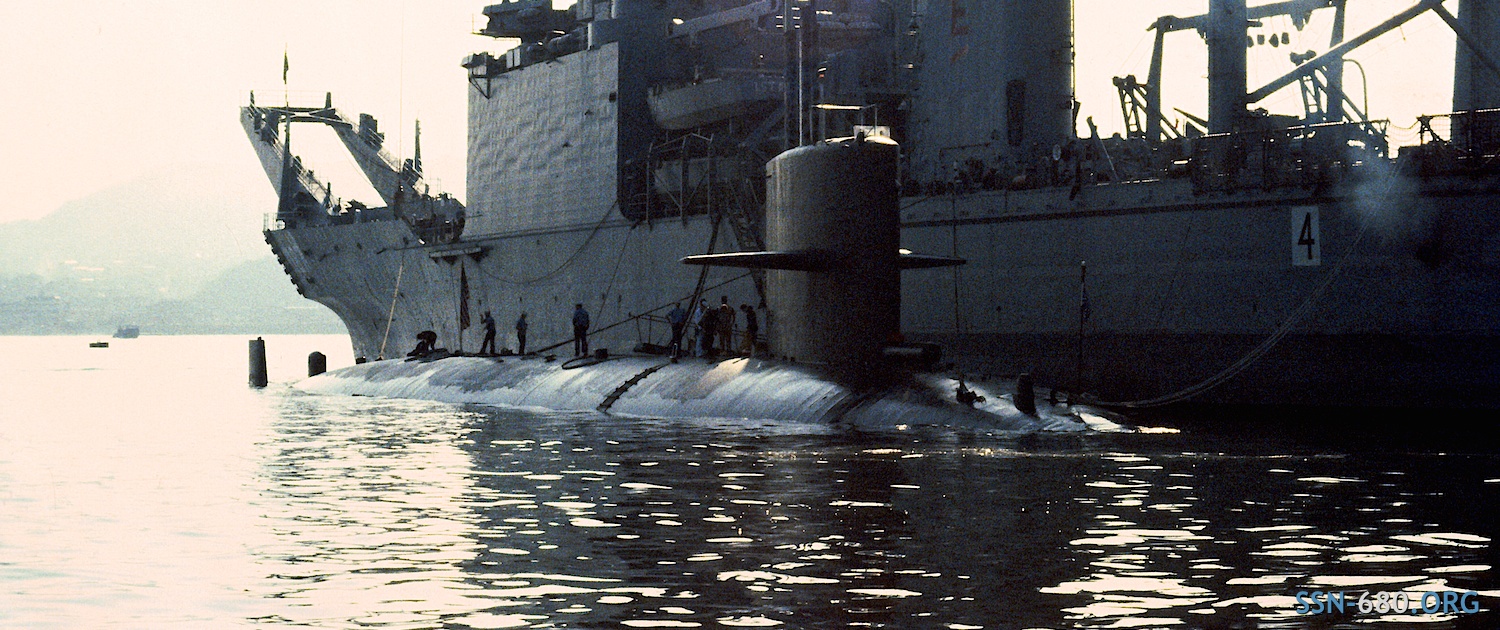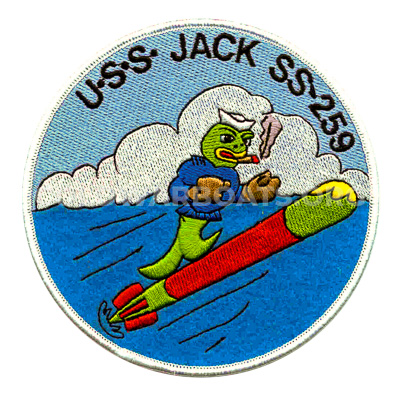Sea Stories by Brad Williamson
Those of you that haven't spent hours at a watchstation underway might wonder what a "Sea Story" is. In a functional sense, it is little more than an anecdote or short tale of an event or events that took place in the life of the story-teller while on-board the submarine.
For the story-teller, it could be bragging, boasting, decompression, passing on of critical truths, teaching the unqualified, or a hundred other things. For the listeners, it was always taken with a grain of salt, because sea stories had a way of evolving, in which the story-teller always became the 'good guy', and the tale, despite having taken on the proportions of Paul Bunyan and the blue ox, Babe, was still unarguably "true".
Whatever it was about, it usually started with the expression "this is a no-s_____r".
Regardless of who was talking and who was listening, sea stories were a way of life, a part of the tradition of sailors from ages past, a way of passing time, that filled our endless hours and sometimes, for a brief moment or two, helped us escape the reality of the present.
We hope you enjoy these.
The passing of time has taught us that while the story might remain relevant and funny, years of experience and wisdom earned the hard way make us more careful now with our words and stories than we were then.
It is not our intent to disrespect or demean any individual in the re-telling of these sea stories, but to share the humor and camaraderie that surrounds our shared experience.
We trust you will enjoy these stories in the spirit intended, as it is not our intention to hurt or offend. Contact me if you feel we should modify or remove a specific story.
On the other hand, in the true spirit of sea stories, I imagine you have a few in which I feature prominently, and I expect you to share them as well.
~ Brad Williamson, Lead Admin
Sea Stories sorted by author, alphabetically from a-z, by command. Click on headings to change sort.

Great sea stories have a few things in common. They are all based, at least loosely, on some real event. They all hold the listener's attention - not usually too hard to do on day fifty-eight of the 'Sea of None of Your Business' hostage crisis. They all generally start with the expression, "This is a no-sh___er."
The title 'Sea Story' can be deceptive. That name comes from the fact that they are usually shared at sea when time, distance from friends and family, and general boredom coalesce into a fertile ground for the emergence of the shared community experience we called a 'sea story'.
Not every sea story, however, starts at sea.
This is one of those stories. And it's a no-sh___er!
 4 comments
4 comments
Editing photos for “Up Scope!” the other day, I was working my way through “The Seventies” post-processing and writing captions for twenty-or-so galleries of images submitted by Neal Degner for the years 1974-1977. I stumbled across a photo of an unusual ship, a haze gray catamaran with the Military Sealift Command (MSC) stripes on her stacks. Curious, I decided a little research was in order, partly because those twin-hulled catamarans were as rare as the Pegusus class hydrofoils during the 70’s and 80’s.
Thank you internet. A few clicks later, and the ship was identified as the USNS Hayes (T-AGOR-16). Named after Dr. Harvey C. Hayes, a pioneer in underwater acoustics and the former head of the U.S. Navy Sound Division of the Naval Research Laboratory, the “Hayes” class oceanographic research vessel was re-purposed in the mid-80’s as an acoustic research ship...

Duty in Subic Bay. Just another day on the Bates. In fact, just another night on the Bates. Sometimes you just wanted to scream.
I wasn't a big fan of the night life in the 'Po, but stuck on the boat was stuck on the boat. I'd rather be sipping an icy San Migoo' and buying skewers of mystery meat from a street vendor's grill by the metric ton. Or a bucket of shrimp fried rice.
But I took my turn like everybody else. I was the Engineering Duty Petty Officer, and it was after midnight. I'd been back aft on a casual tour, and engineering, like most of the boat, was deserted. I shared coffee and stories with the Shutdown Reactor Operator, found a lighter for the Roving Watch, and then wandered up topside.

December 8, 2010.
Thirty years since the murder of famed Beatle John Lennon, on the sidewalk in front of his New York City apartment. Like the assassination of Kennedy, the explosion of the space shuttle Challenger, the attack on and subsequent collapse of the two towers of the World Trade Center, there are a few events that were significant enough that people remember exactly where they were and what they were doing when the event occurred.
Now, I wasn't a big fan of John Lennon, and for the most part don't consider celebrities of being worthy of remembering where I was when they joined the choir eternal. Many famed musicians have shuffled off this mortal coil since I was born...Jim Morrison, Elvis Presley, Kurt Cobain, Janis Joplin, Buddy Holly, Jiles Richardson, Michael Jackson...the list goes on. Of those, for some reason, I only remember where I was when I learned of the passing of two of them: The King, and John Lennon.

 Fall of 1982, and we have navigated the island strewn channel into the harbor at Sasebo, Japan. As we make our final turn into the port, we see our target, the USS TUSCALOOSA (LST 1187), anchored out, awaiting our arrival. The wind is brisk, but not too cold, and line handlers are mustering topside in preparation for mooring.
Fall of 1982, and we have navigated the island strewn channel into the harbor at Sasebo, Japan. As we make our final turn into the port, we see our target, the USS TUSCALOOSA (LST 1187), anchored out, awaiting our arrival. The wind is brisk, but not too cold, and line handlers are mustering topside in preparation for mooring.
Communication on deck is difficult. Eight or ten news helicopters orbit the boat like a swarm of angry bees, the whine of their turbines adding to the noise level and the metaphor.






